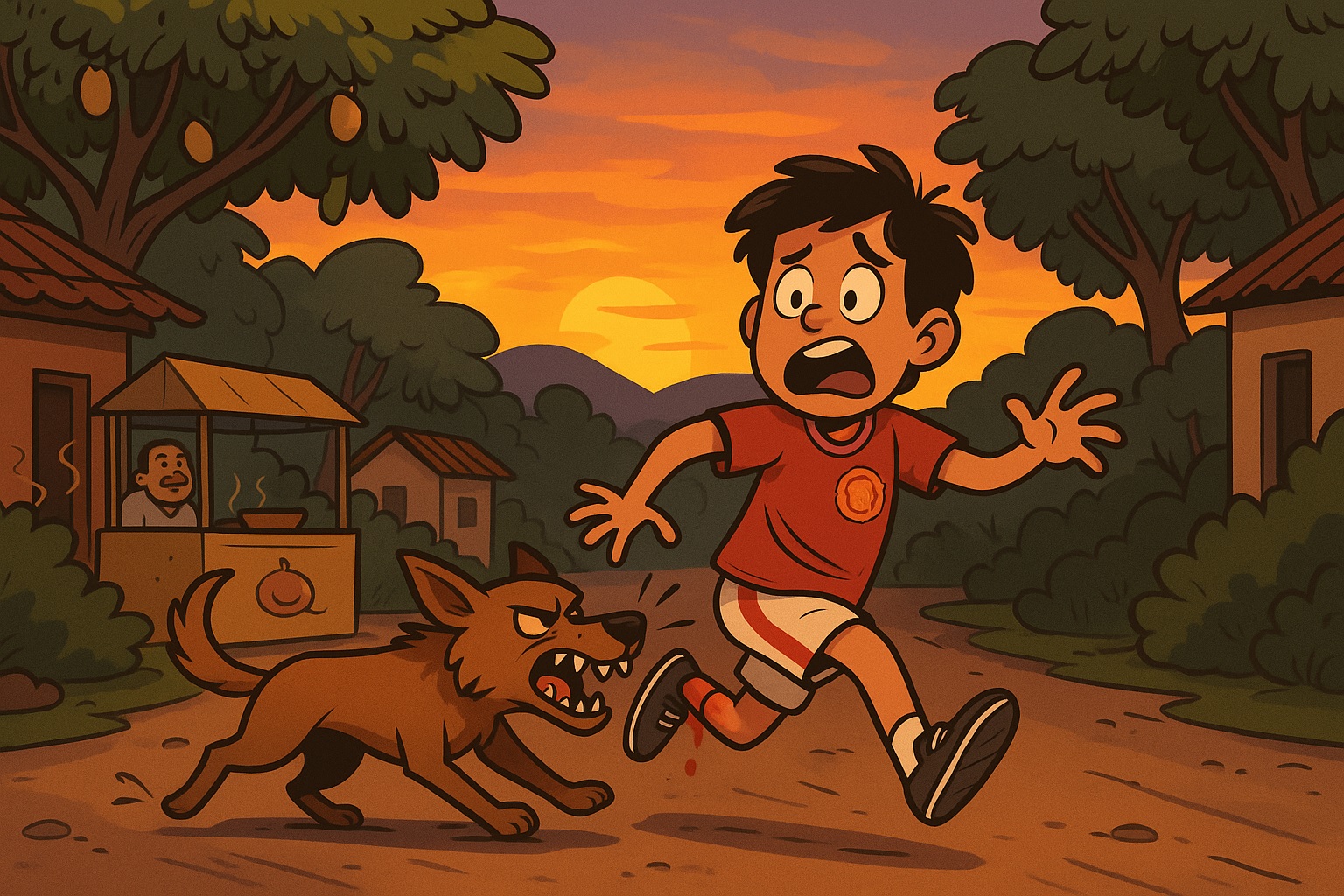
It’s August 2012, 5:30 PM in Honda village, Goa. A 12-year-old me is strolling home, the sky bruising into a dark sunset. I am belting out Justin Bieber’s “Baby, baby, oh,” in my favourite Manchester United jersey, my voice a carefree echo through the quiet lanes. The air hums with the scent of vada pav from a nearby gaado. Then, a shadow moves. A stray dog, hidden by a cluster of mango trees, pounces, its teeth sinking into my right calf. Pain explodes, but fear takes over. Half-sobbing, half-running, I stumble home, heart pounding like a misfiring engine. Over the next weeks, 12 gruelling injections follow, each a reminder of a trauma that lingers like a jammed gear in my memory.
In Goa, stray dogs are as familiar as the monsoon’s rhythm. They sprawl near fast food stalls, scavenge outside bars, and trail kids kicking footballs in dusty fields. In my waddo, neighbours toss chappatis to them, a gesture of kindness rooted in our Goan ethos of compassion. Some say these dogs keep watch over our lanes. But kindness can misfire. That evening, I learnt how quickly a stray’s instincts can turn a quiet walk into a nightmare.
The Supreme Court’s recent order on stray dog management has sparked outrage among activists, who, from plush apartments, decry it as cruel. As someone who’s felt fangs break skin, I stand firmly with the court and the Goa government, which has smartly heeded its call. My grandmother’s stories still haunt me; a neighbour, decades ago, ravaged by rabies, his agony so unbearable the village faced an unthinkable choice to end his suffering. Those tales aren’t just village lore; they are a grim warning of what is at stake.
Dogs are wonders of loyalty. In Panaji, friends share tales of their pets’ devotion, bonds as tight as a well-oiled hinge connecting door to frame. But strays don’t have that anchor. Without an owner’s care, they’re like a machine running without maintenance, unpredictable, prone to snapping. India reports 37 lakh dog bites yearly, and Goa’s share climbs as villages like mine brush against urban sprawl. Children, darting through gullies, are often the victims, their small frames no match for a pack’s sudden charge.
Goa’s efforts are a sputtering motor. Sterilisation campaigns limp along, starved of funds. Shelters are as rare as a clear sky. Feeding strays, though heartfelt, draws more dogs to crowded markets, escalating risks. Activists preaching “coexistence” rarely face the fallout, a bite’s terror, a child’s screams, or rabies’ shadow in areas where clinics are a rickety car ride away. It’s not compassion if it sidelines human lives.
The Goa government’s alignment with the Supreme Court is a step toward a smoother system. We need robust sterilisation, real shelters, not chaos. No kid should belt out pop songs only to sprint from a snarling stray, praying to Ganpati for safety. Readers, imagine your own child dodging teeth on a dusk-lit lane. Our kids deserve freedom from fear, and adults shouldn’t need a dozen shots to feel secure. Let’s back a Goa where kindness and safety work in sync, not at odds, ensuring no one else runs sobbing from a bite that could have been prevented.
>The writer is a young faculty member at a Polytechnic School in Goa